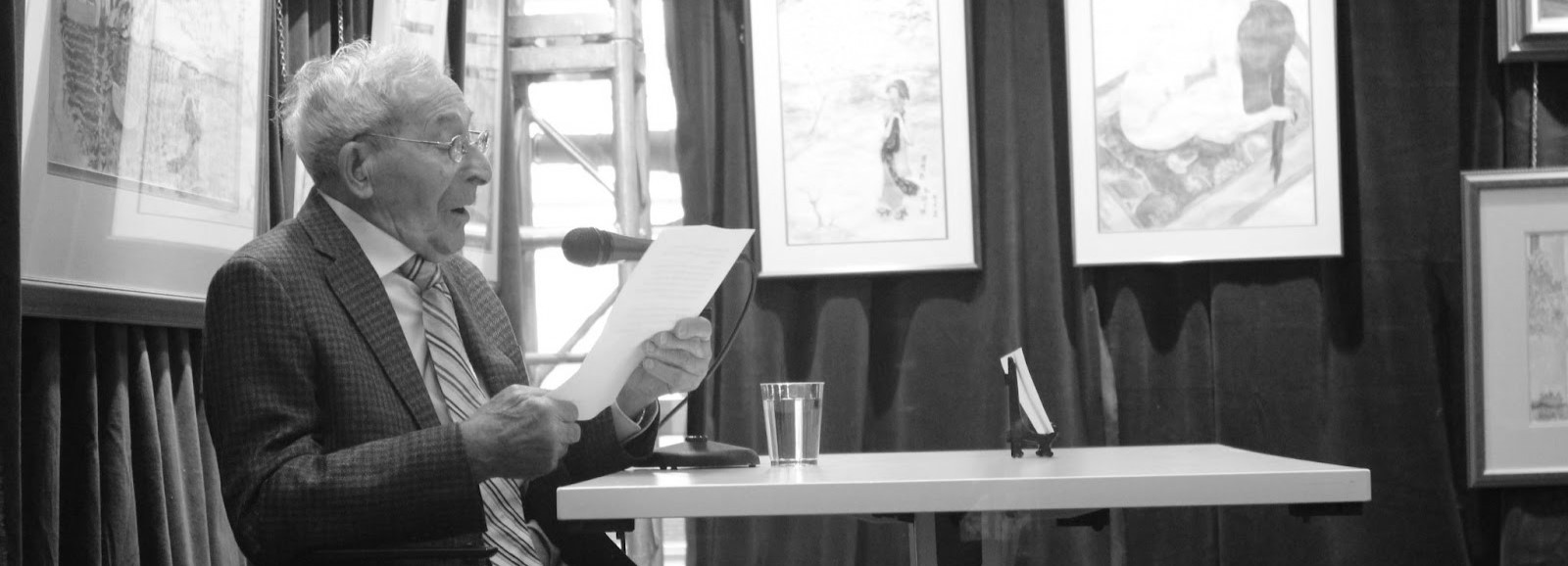
About Joseph Gringlas Z”L
Joseph Gringlas (née Grynglas), son of Leizor, a shoemaker, and Blima, was born on May 20, 1926, in Ostrowiec, Poland. The youngest of six children, Joseph had four brothers— Mendel, Shlomo, Jankel and Sol—and one sister, Miriam Baila. The family was observant- lit candles every Sabbath and celebrated all Jewish holidays. Joseph even attended Cheder every day after public school.
On September 1, 1939, the German army invaded Poland, and occupied Ostrowiec one week later. The day the army arrived, Joseph saw Jewish doctors and lawyers killed in the town square. Food began to be rationed, and Leizor was no longer allowed to work. In 1941, a ghetto was established in Ostrowiec. The Gringlas family did not have to move since their home was already inside ghetto borders. Joseph worked in the ghetto: he cleaned streets, worked in a kitchen, did manual labor, and was eventually sent to work in the Ostrowiec steelwork where his brother Sol also worked. In October 1942, most of the family was sent to Treblinka when the ghetto was liquidated. Sol, the family’s only other survivor, and Joseph remained behind working on the ghetto factory.
The brothers were later separated and Joseph was sent to help build the Blizyn concentration camp. He was later transported to Auschwitz, where he lied about his age and was sent to work at Auschwitz III-Monowitz where he was reunited with his brother. “I will never forget the day I arrived here,” Gringlas told his granddaughter Sara Greenberg in a 2005 Jewish Exponent article about a return to Auschwitz. “When I got off the train, I could see that the sky was red. The permanent smell of burning bodies is something I will never forget. It is a miracle I survived.”
In January of 1945, Joseph and Sol endured the 30-mile Death March from the Auschwitz camps to Gleiwitz and were transported to Mittlebau- Dora, where they remained as prisoners until the United States Army liberated them on April 11, 1945. Joseph sustained injuries from shrapnel which he carried in his lungs for the rest of his life. Joseph and Sol were the only members of their family to survive the Holocaust.
Those days before liberation were harrowing, as the brothers endured Allied bombings, fleeing the barracks and hiding amid kitchen pipes to survive. They learned that the SS guards murdered anyone in the barracks who survived the bombings. “I weighed 80 pounds. I was running,” he said in the 2018 Exponent article. “I was excited — I never thought I would get out of there.”
After liberation, Joseph and Sol lived at the Landsberg Displaced Persons Camp in Germany. Joseph went on to technical school in Esslingen and, in 1950, immigrated to the United States. In those challenging years following the Holocaust Joseph, with courage and resilience, would build a family, start a business, live life, and love life.
Joseph Gringlas debuted as an artist in 2018 at the age of 93, displaying his watercolor and oil paintings at Haverford College’s Visual Culture, Arts and Media Center through the Stories that Live fellowship.
He passed away on November 8, 2021 and is survived by his wife of 64 years Reli, who is also a survivor; daughter Marcy (Joel Greenberg); son Larry (Karen Fink); five grandchildren; and two great-grandchildren.
After his passing, Marcy Gringlas and Joel Greenberg dedicated Stories That Live to his memory and the program was renamed the Joseph Gringlas Z”L Stories That Live.
It is an honor to carry the name of Joseph Z”L on a program that is committed to connecting survivors of the Holocaust to the next generation.
May his memory be for a blessing
